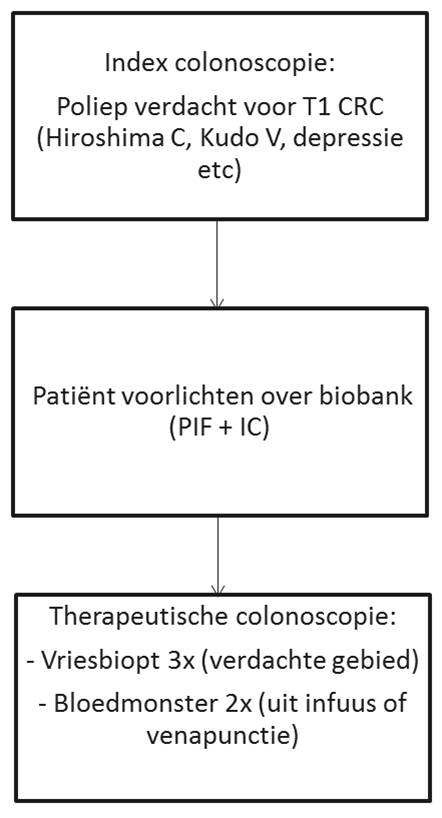The vast majority of patients with a T1 CRC do not have lymph node metastasis (LNM). T1 CRCs in the colon can potentially be removed with minimal invasive techniques such as endoscopic polypectomy or trans anal microsurgery (TEM). The benefits of treating patients with these minimal invasive techniques as compared to major surgery, are the low mortality rates (< 0.5% vs. 3%), minor complication rate (3% vs. 15%), and the less economic burden on national healthcare costs as the costs of a polypectomy are only 10% of the costs of major surgery.
The Problem
The difficulty is however to predict the presence of LNM prior to major surgery. Currently, only histologic markers are recognized to predict LNM. In the recently published Dutch guideline on treatment of CRC, the histological criteria grade of differentiation and the presence of lymph-angioinvasion have been stated as risk factors for LNM. In the absence of these criteria, the patient has an extremely low risk of LNM or recurrence of the CRC within the following 5 years. Only 25% percent of the T1 carcinomas can be recognized as low risk, and this group is advised to be treated with minimally invasive techniques. The remaining 75% of “high risk patients” are referred for major surgery. Of these, only 15% will be found to have LNM after surgery. The positive predictive value (PPV) of this approach is only 15% with a NPV of 100%. Therefore, a significant group of patients still undergoes major surgery without any benefit.
Solution
During the last decades, the insights in the mechanisms involved in the development of LNM have increased. This knowledge may be used to identify molecular markers indicative of the pathways involved in LNM. These markers may be used to predict the presence of LNM after minimal invasive resection of T1 CRC.

